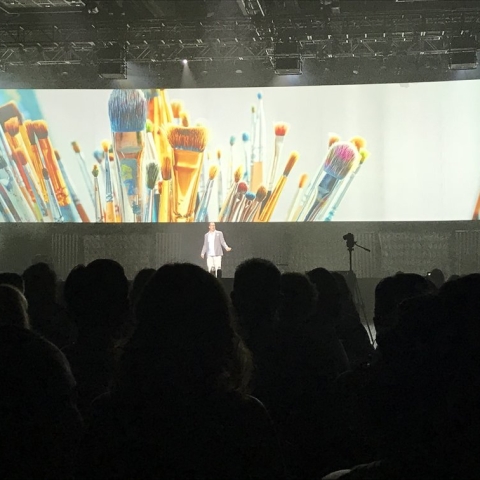Events That Create Unforgettable Experiences Thrive in Today’s Market

We all want to have experiences that we feel are worthy of sharing with others and that we look back on with positive feelings. While a good place to get business done, the standard model of trade show (which also applies to any conference with a sizeable exhibit hall) – aisles of pipe and drape and dozens of lecture rooms – is not as strong when it comes to creating a lasting impression. Today, however, the model is changing at events of all sizes and types.
Krista LeZotte, senior manager of conferences at ASAE, says that making an event memorable is the best way to capture attendees’ attention both before, during and after the event.
“When attendees walk away from an event full of energy and excitement they will continue to use your event as a reference in conversation,” she explained. “It is a great way to create buzz and word-of-mouth promotion for your event for future years.”
Creating memorable experiences can be as simple as adding a creative new element or as complex are reworking the entire event concept. Either way, when considering adding new features to an event, research is the key to getting stakeholders and organizational leaders on board.
LeZotte says event organizers need to get their stakeholders just as excited as the attendees who walk through the event’s doors. Organizers should understand how the new element or change in direction will reach your attendees, how it will impact the rest of the event, how it will dictate the future of the event as well as how it impacts the bottom line in order to sell it.
“Making sure you have all elements fleshed out before your design presentation will allow you to predict the challenges, opportunities and questions that may arise,” she said.
LeZotte continued, “If your budget and time allow, try testing out a pilot of the event with these changes in a smaller capacity to see how attendees would react as well as your stakeholders. It will allow you to make changes before the event date and ensure you have thought through the impact of the event design.”
Other research options include conducting focus groups to test out certain elements of the event to ensure you will have member buy-in.
“Most of all, ensure when presenting the event design to the stakeholders you ignite their senses through the presentation,” she added.
When a new element is implemented it is important to establish metrics to gauge success. These metrics can take on many forms from profit margins to survey results from your attendees.
“In order to establish metrics for success, you need to know the goals and objectives from the beginning not just for you, but for your stakeholders,” LeZotte explained. “Determine how you’ll collect and analyze information to measure the metrics and understand in each area if the event is successful.”
While it is not necessary to reinvent the entire experience for every show, it does help to change a few elements each year to pique the interest of attendees, excite them for the next meeting and keep them engaged in different ways.
“Changing elements of the experience can be as easy as switching up the room set for your learning breakouts, changing a simple continental breakfast into a fun, creative dining experience or adding surprise elements into the conference,” LeZotte added.
LeZotte, along with Katie Stern of UBM and Kevin Barasso of Mohegan Sun, will participate in a free TSNN webinar, “Creating Memorable Event Experiences: Game On!” on Nov. 8 at 1 p.m. ET, where they will discuss how to create unique experiences for attendees. To register, go HERE.


Add new comment